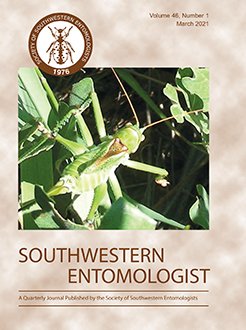Knowledge of factors influencing abundances and distributions of species on host plants could facilitate effective, sustainable management of the non-native crapemyrtle bark scale, Acanthococcus lagerstroemiae (Kuwana) (Hemiptera: Eriococcidae). We characterized habitat variables associated with crapemyrtles, Lagerstroemia spp. (Myrtlaes: Lythraceae), widely planted in Texas landscapes receiving minimal cultural inputs such as insecticide, irrigation, fertilization, or pruning. Arthropod species on individual trees and landscape cover in a 32.4-m-radius area around each of 100 Lagerstroemia spp. (40 of ‘Natchez' hybrid cultivar and 60 of various other cultivars) were surveyed in Brazos County and Tarrant County during six consecutive seasons starting in spring 2018 and ending in summer 2019. Data were analyzed using principal component analysis to create a reduced set of independent variables. Principal component analysis consistently generated three principal components (PC1, PC2, and PC3) that cumulatively described at least 90% of the variance among the landscape variables. Factor weightings were similar between the two locations, with areas covered by turf and hardscape explaining the greatest amount of habitat variation in PC1 with the two factors negatively related to each other. PC2 was composed of area covered by Lagerstroemia spp., and PC3 the area covered by other tree species, and both factors had positive weighting. A similar pattern was detected for cultivar type (‘Natchez’ versus non- ‘Natchez') except area covered by Lagerstroemia spp. and the area covered by other tree species best represented by PC2. Factor weights associated with seasonal principal component analysis were similar to results from analyses by location. The seasonal-specific factor weightings remained constant, suggesting a lack of seasonal effect on habitat variables included in the study. The principal components were included in a least-squares stepwise multiple progression procedure to test for the influence of landscape composition on the scale and select associated arthropod populations. Although p < 0.05 for some variables, no models had adjusted R2 > 0.10. In the minimal input landscapes, trees, turf, and hardscape were the dominant habitat variables. Landscape variables were not a strong predictor of A. lagerstroemiae populations or natural enemies, thus suggesting manipulation of the parameters would have minimal effects on abundance and distribution of the species.
How to translate text using browser tools
25 March 2021
Landscape Structure and Its Effects on Crapemyrtle Bark Scale, Acanthococcus lagerstreoemiae, and Its Natural Enemies
Kyle Gilder,
Mengmeng Gu,
Michael Merchant,
Kevin M. Heinz
ACCESS THE FULL ARTICLE

Southwestern Entomologist
Vol. 46 • No. 1
March 2021
Vol. 46 • No. 1
March 2021




